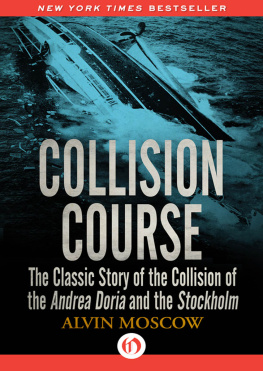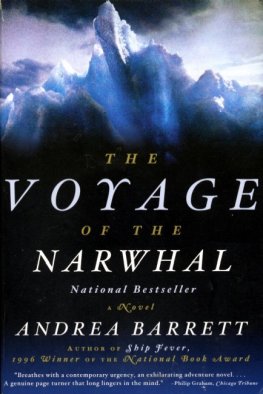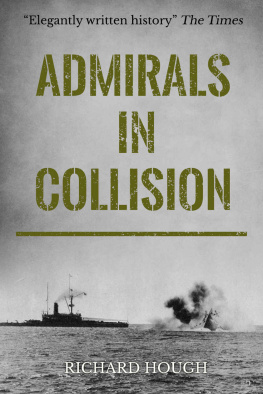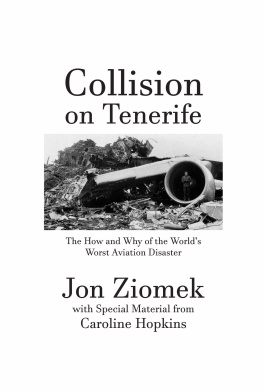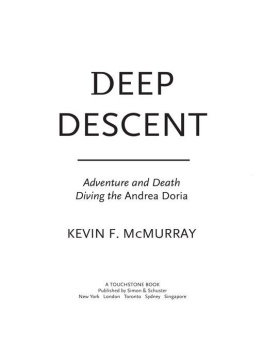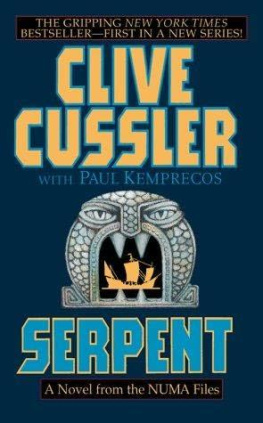Collision Course
The Classic Story of the Collision of the Andrea Doria and the Stockholm
Alvin Moscow

To DEIRDRE, again
Contents
An Explanation
This is a completely factual and true account, within the capabilities of the author, of the worst sea tragedy of our times. The temptation to extend this story to what might have or must have happened has been scrupulously avoided. No words or thoughts have been put into the minds of the survivors beyond those remembered afterwards by each of the men or women who spoke or heard them.
Many facets of the story are steeped in controversy, and, aware of this, I have tried to check and recheck every fact contained in this book. Where accounts conflicted, I have applied the weight of evidence to reach an unbiased conclusion, and where the weight of evidence failed to tilt the scales appreciably to one side, both sides of the story have been presented.
Much of the controversy over the rescue operation stems from the fact that each participant witnessed only a particular segment, be it large or small, of the disaster. The primary purpose of this book is to put into proper perspective for the first time the pertinent aspects of the collision of the Andrea Doria and the Stockholm.
Having approached this subject as a news reporter with little, if any, aforehand knowledge, I am happy to make known the help I received from many sources.
Firstly, I am indebted to The Associated Press, in general, and to my city editor, Joseph H. Nicholson, in particular, for introducing me to this subject by assigning me to the four months of court hearings on the disaster, and again for granting me an extended leave of absence for further research and the writing of this book.
I wish to thank the Swedish-American Line and its attorneys, Charles S. Haight and Gordon Paulsen, and the Italian Line and its attorneys, Eugene Underwood and Kenneth Volk, for the extent of their cooperation under the circumstances.
I am grateful to the officers and men of the Andrea Doria and of the Stockholm who individually allowed me to probe their thoughts as well as review their activities on the night of the collision: Captain Piero Calamai, Staff Captain Oswaldo Magagnini, Third Officer Guideo Badano, and Dr. Bruno Tortori-Donati of the Andrea Doria; and Captain H. Gunnar Nordenson, Chief Officer Herbert Kallback, Second Officer Lars Enestrom, Third Officer Ernst Carstens-Johannsen, and Chief Purser Curt Dawe of the Stockholm.
I needed and received expert advice for the understanding of certain technical aspects and background material concerning the disaster, and for this help I wish to thank, among others, H. L. Seward, Professor Emeritus of Mechanical and Marine Engineering at Yale University, who served as consultant to the Committee on Merchant Marine and Fisheries of the House of Representatives in its investigation of the collision; W. R. Griswold, sales manager of the Marine Division of the Sperry Gyroscope Company; Frank O. Braynard, of the American Merchant Marine Institute; and John Sherman, of the U.S. Merchant Marine Academy, Kings Point, New York.
My thanks are due also to the commanders of the major rescue vessels at the scene who submitted to my interrogation, to those passengers who corresponded, telephoned, or spoke with me about July 25 and 26, 1956, and to the many seafaring men who revealed to me shipboard practices that are not to be found in books, periodicals or newspapers.
With the passage of so many years since the original publication of this book in 1959, I have now the rare opportunity of thanking the reading public for their high and continuing interest in Collision Course. This was my first book. Its success in the marketplace changed my career and my life. I have a very special affection for it, as my firstborn, and so I would like to express here my appreciation to Robert Markel and Norma Anderson, editors at Grosset & Dunlap, for bringing Collision Course back to life in a new edition in 1981. And now I would especially like to thank Jonathan McCullough and Emily Ginsberg, editors at Lyons Press, for their help with this new updating of Collision Course.
In writing a new chapter on the Andrea Doria as the Mount Everest for scuba divers, I was coached by three intrepid and experienced deep sea scuba divers who know the Doria so well: David A. Bright, Christina Young, and Bart P. Malone. They are now part of the story, and I thank them. Finally, for moral support and critical editing throughout the writing of the three editions of this book, I amas I was before for other reasonsforever indebted to Deirdre Meadow Moscow, my wife.
It must be said, however, that with all the help received from persons mentioned above and others not listed, the views and conclusions expressed in this book are solely those of the author.
A LVIN M OSCOW
S T . G EORGE , U TAH 2004
Chapter One
A CALCULATED RISK
The North Atlantic, like all oceans, is trackless and free, a no-mans body of water beset by storms and ice in the winter and storms and fog in the summer. This mighty ocean has been made safe for travel by the genius of man. Yet in his frailty man must take care, for despite all the electronic wonders devised through the years of scientific progress, periodically the sea takes its toll.
On a Wednesday, the 25th day of July, 1956, at 2:40 in the afternoon, Superior Captain Piero Calamai, who had devoted thirty-nine of the fifty-eight years of his life to the sea, sensed fog in the air. He made straightaway for the bridge of his ship, the Italian luxury liner Andrea Doria.
The captain, a tall, well-built man whose swarthy suntanned face was dominated by an aquiline nose, was credited by his crew with a sixth sense by which he could smell fog on the horizon before it became evident to the men on watch. It was an unusual occurrence when Captain Calamai had to be summoned to the bridge because of fog. The captain, like masters of all ships, had standing orders that he be called in the event of any kind of reduced visibility at sea. He seemed always to arrive there, though, just before he was needed. The simple explanation for Captain Calamais sixth sense probably was that he was a worrier. He never was away from the bridge of his ship for long. Of the multiple duties incumbent upon the master of a ship, Captain Calamai favored those of chief navigator.
The aloneness forced upon a man by the sea suited the Italian captain. A shy, introverted person, he least enjoyed the social obligations of a captain of a luxury liner. Because he disliked cocktails, liquor and small talk, he discharged his social obligations to celebrities and important passengers aboard by showing them the bridge of his beautiful ship during the morning hours. He preferred conducting a tour of the ships bridge and instruments to acting as host at the usual cocktail party in the captains cabin. Neither did he dine with passengers at a captains table. He ate with his senior officers in a small room off the First-Class Dining Room.

